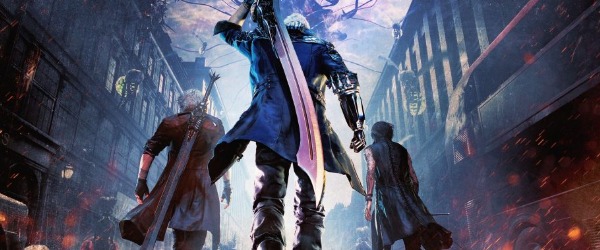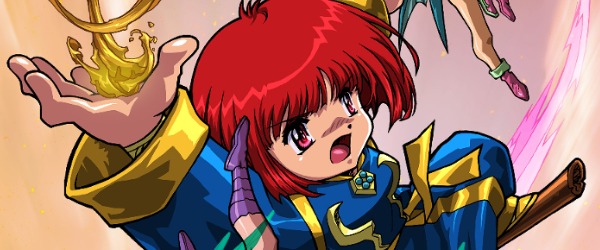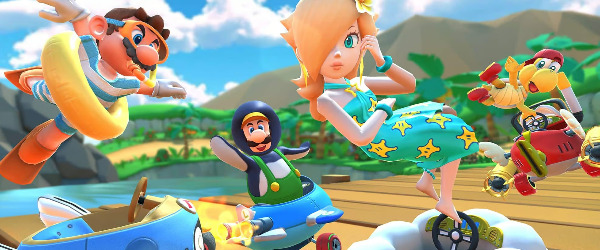
History of Video Games: 3D Becomes the Standard (1994-1997) - Article
by Taneli Palola , posted on 18 March 2016 / 21,835 ViewsLast time we ended just as the fifth console generation was taking its first, rather shaky steps into a market in flux. The older consoles still held control of the console market, as the transition from 2D to 3D wasn't as smooth as might have been hoped. However, history was about to repeat itself, with mistakes from the current giants paving the way for a newcomer to take over the market.
1994 began with the SNES and Mega Drive/Genesis still battling it out to see who would emerge victorious in the console war. The newer consoles had failed to take hold and Nintendo especially was content to just maintain the status quo. After all, the SNES wasn't actually that old yet. Instead it was the Mega Drive that was starting to look dated as it entered its sixth year on the market.
Still, for most of the year things looked to carry on as normal. Both consoles saw numerous high profile releases, arcades were still staying relevant, and PC continued to enjoy some of the platform's best years to-date.

Despite the aging hardware, Sega maintained support for the Mega Drive, starting with the February release of Sonic The Hedgehog 3, which introduced the character of Knuckles to the series. Later in the year Sega would release Sonic & Knuckles, which featured a unique lock-on technology. This allowed players to combine the two games, unlocking extra content in the games, including the ability to play as Knuckles. Sega's console was also the first platform to get Earthworm Jim, although only by a few months.
The SNES received some of the platform's most beloved games in 1994, many of which are still considered to be among the best games of all time. Nintendo themselves released Super Metroid, perfecting the 2D Metroid formula. They also corrected one of their biggest mistakes of the generation when Mortal Kombat II came out on the SNES with all the blood and gore intact.
Another huge game for the console was Rare's Donkey Kong Country, which both revived and reinvented the character after a fairly long hiatus from the spotlight. It would spawn two sequels for the console and became one of the best-selling games of the generation. It also began a period during which Rare became one of the top developers in the industry and remained as one for the rest of the decade.

Square was another developer that seemingly could do no wrong during this time, releasing classic after classic in the mid to late 90s. In 1994 they released what is generally seen as one of the best RPG's of all time, Final Fantasy VI (renamed FF III in its western release). Outside of the big two, the 3DO got at least one significant game during the year when EA released The Need For Speed on the console, starting what is the most commercially successful driving game franchise of all time. The game would later be ported to various other platforms as well.
Arcades continued to thrive too, largely thanks to the rising popularity of fighting games during this time. Within this single year, arcades saw the releases of Capcom's Darkstalkers: The Night Warriors, SNK's The King of Fighters '94, Rare's Killer Instinct, and Namco's Tekken. Each of these games gave birth to a successful series of video games, helping the fighting game genre attain huge levels popularity during the 90s.
Computer gaming was taking huge leaps forward in the development of various genres. Space-combat sims were becoming one of the more popular video game genres on PC with the help of Wing Commander III: Heart of the Tiger by Origin and Tie Fighter by LucasArts. Wing Commander III featured an exceptionally big name cast for a video game of the time, including actors like Mark Hamill, Malcolm McDowell and John Rhys-Davies. Unsurprisingly, it was one of the most expensive games of all time up to that point, costing around $4 million dollars to make.
1994 also saw the debut of many beloved strategy game series with the launch of such games as UFO: Enemy Unknown, Master of Orion and WarCraft. UFO and Master of Orion are still seen as prime examples of their respective genres, while Warcraft was still working through some growing pains before it would truly begin to make its mark with later games in the series. Each of these has spawned numerous sequels over the years, many of which have become some of the most highly regarded games of all time.
Other new IPs that saw their inception in 1994 on PC included Jagged Alliance, Jazz Jackrabbit, Master of Magic, Heretic and, perhaps most notable of all, the original System Shock. In addition, Doom II and King's Quest VII: The Princeless Bride ensured the continued success of their respective series.
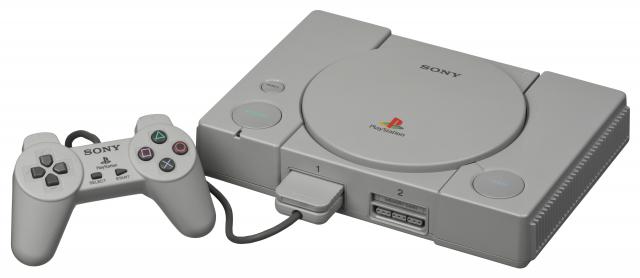
Despite all of these important games, the most notable event of the year took place when Sony entered the console market with the launch of the original PlayStation in Japan on December 3rd. Sega also entered the new console generation with the Saturn in November. Following the success of the Mega Drive, Sega had become a serious player in the console market, and this was in large part due to the platform's headstart on the SNES, but this time the early release of the console would become a serious hindrance to its success.
The story behind the birth of the PlayStation is a fascinating series of events that eventually boil down to the fact that the mistakes made by both Nintendo and Sega over the preceding few years ended up creating a new competitor. It is quite well known that Sony and Nintendo had been working together to develop a CD-based add-on for the SNES called the Play Station since the late 80s, but the deal fell through when Nintendo's then president Hiroshi Yamauchi realised the deal would give Sony control over all of the titles created for the add-on. He promptly cancelled all plans to work with Sony, without telling them about this, and at the 1991 Consumer Electronics Show (CES) Nintendo announced that they were now working with Phillips on a CD add-on.

After the deal fell through Sony considered a similar partnership with Sega, but Sega's Board of Directors shot the idea down, apparently believing that Sony would be unable to create both suitable hardware and software for such a platform, making the deal unfathomable to them. At first these events almost resulted in Sony ceasing development of the console, but eventually it was decided that they would create an entirely new console based on the work that had already been done by that point. This would eventually become the original PlayStation and most of this work was done by Ken Kutaragi, who is today known as the father of PlayStation.
Both the Saturn and PlayStation had successful launches in Japan. However, Sega had decided to rush the launch of the console so that it would be out before the end of the year. This resulted in a rather barren launch line-up of games. Still, initially the Saturn outsold the PlayStation in Japan, and was helped immensely by the popularity of Virtua Fighter. Suddenly, the console market had become a very different place.
1995 was something of a transition period for the industry. The SNES was still very much alive, though it had begun to decline at this point, and the new consoles had yet to establish themselves on the market. Arcades were also beginning to dwindle once again, as home consoles were now able to run real 3D games as well, taking away one of the key advantages arcades had over home console platforms.

PC gaming was largely unaffected by all of this, as the changes in console hardware didn't have much impact on the platform. As a result, gamers once again enjoyed numerous landmark titles throughout the year. Star Wars: Dark Forces and Descent demanded people's attention early in the year, while LucasArts continued to explore the adventure game genre with Full Throttle in April. And Phantasmagoria from Sierra was in sharp contrast to the developer's usually family friendly output, so much so that the game actually sparked controversy concerning some of its more graphic scenes.
On August 31, gamers on PC rejoiced as the day bore witness to the launch of Wing Commander IV: The Price of Freedom, Heroes of Might and Magic: A Strategic Quest, and one of the year's most important new releases - Westwood's genre defining RTS Command & Conquer. Wing Commander IV was the most expensive video game developed up to that time, with a budget of $12 million, most of which went into creating the game's FMV sequences.
Command & Conquer wasn't the only landmark RTS released in 1995. On December 9th the launch of Blizzard's WarCraft II: Tides of Darkness kicked off a rivalry between the two series and their developers that drove the genre to unprecedented heights in the late 90's. In addition to all of these, the year also saw the releases of I Have No Mouth, and I Must Scream and Worms, among many others.
1995 was also the year in which both the PlayStation and Saturn were released in the west. Saturn was originally supposed to be released in September, but Sega of Japan ordered the release to be pushed significantly ahead of the PlayStation to presumably take advantage of a headstart. As a result, at the first ever E3 in 1995 Sega announced that the Saturn was available immediately. However, this backfired severely on the company, as retailers had no chance to advertise or otherwise prepare for the console's launch, and many of them were upset at not being informed of this sudden release. Finally, when combined with the fact that Sony announced the launch price of the PlayStation as being $299 (the Saturn had just been announced as retailing for $399), this all meant that the Saturn was practically dead on arrival.
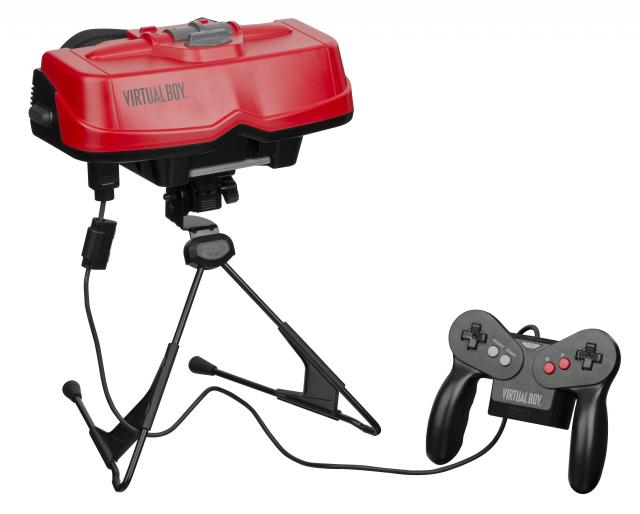
Nintendo also made their own fair share of mistakes in 1995, releasing the now infamous Virtual Boy in Japan and North America. The console was a huge critical and commercial flop for Nintendo, and the company's second lowest selling platform after the failed 64DD. Some of its worst aspects were cited as it being uncomfortable or even painful to play, having a nausea-inducing red and black screen, a poor game library, and a high price. Nintendo's initial projections estimated sales of 3 million units by the end of the year, but by the end of its short existence the system had sold a mere 770,000 units. The Virtual Boy was discontinued in late 1995 in Japan and in March of 1996 in North America.
In terms of software both the old and new consoles were doing quite well. The Genesis got Ristar and Phantasy Star IV: The End of the Millennium to help it through one more year. Saturn's most notable new games were Panzer Dragoon and Rayman, the latter of which was also released on the PlayStation. Sony's console got a few notable games as well, including Destruction Derby, Battle Arena Toshinden, and Twisted Metal, which is today the longest-running PlayStation franchise.
Yet there was no doubt that the SNES was still the console to beat in 1995. The number of high quality games released on the system was significantly higher than any of its competitors. The RPG genre in particular seemed to enjoy a particularly great year on the console, with games like Front Mission, Terranigma, Tactics Ogre: Let Us Cling Together, Dragon Quest VI: Realms of Revelation and Earthbound all releasing. And that's before even mentioning the likes of Super Mario World 2: Yoshi's Island, Mega Man X3, Castlevania: Dracula X, and Donkey Kong Country 2: Diddy's Kong Quest.
However, none of the above titles attained quite the same status as Square's last masterpiece on the system - Chrono Trigger. Many of the game's aspects were considered revolutionary for the time, including the multiple different endings the game had, as well as its unique battle system. The graphics were also praised and the soundtrack is generally considered one of the best of all time.
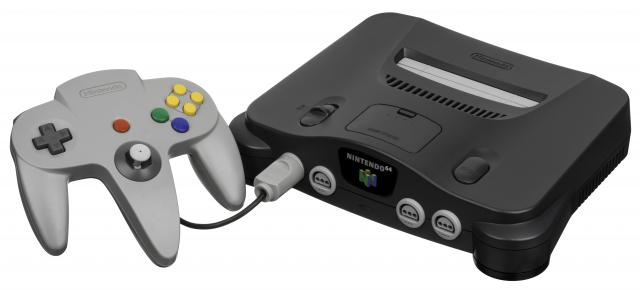
In 1996 Nintendo finally entered the new console generation with the Nintendo 64. The system was an immediate success in the west, where it swiftly started to outsell both the Saturn and the PlayStation. However, in Japan the console wasn't nearly as successful, losing to both its competitors in sales. Despite the lukewarm reception in Japan, in general the console was in high demand early on in its life and was routinely compared favourably to the other two major consoles on the market.

One of the key reasons for the console's early success was the release of Super Mario 64, which was a launch title. It was the first 3D Mario platformer and ended up becoming the best-selling game on the system. It is one of the most successful jumps from 2D to 3D that any franchise has ever made, and to this day it stands out as one of the most influential games of all time.
Besides Mario's latest offering, the N64's first few months were somewhat barren in terms of software, but there were a few notable games during this time as well. Pilotwings 64 came out at launch along with Super Mario 64, while Killer Instinct Gold and Star Wars: Shadows of the Empire helped the console through the holiday season.
Despite the launch of the N64, the SNES still had some steam left to carry it through another year. Games like Donkey Kong Country 3: Dixie Kong's Double Trouble, Bahamut Lagooo, Kirby Super Star, Star Ocean and, perhaps most notably, Super Mario RPG (which began the long-running Mario RPG series and was one of the last games Square made for a Nintendo console in many years), were all released on the SNES following the N64's launch.
The Saturn was also starting to pick up the pace after a relatively slow first year on the market. Guardian Heroes, Dragon Force, Shining Wisdom and Panzer Dragoon II Zwei were all well received and helped the Saturn boast a very unique video game library. However, the most notable new exclusive of the year was Sega's own NiGHTS into Dreams..., which still remains one of the console's most memorable and beloved games.
This was also the year that saw the debut of Lara Croft in Tomb Raider, which released on the Saturn, PlayStation, and PC. In the future the series would typically be associated with Sony's platforms, but for the series' first installment the Saturn was, at the time, considered very much an equal platform for the title. Nonetheless the PlayStation in general was beginning to pull ahead of the Saturn during 1996, helped by the release of several big, new games.

Tekken 2, Twisted Metal 2, and WipEout 2097 continued their respective series on the PlayStation, each game achieving great critical and commercial success and pushing the PlayStation even further ahead of the Saturn. However, it was a few new IPs that made the biggest impact on the console that year. In March the PlayStation received one of its first huge third party exclusives when Resident Evil was released, effectively popularizing the survival horror genre and starting one of the modern era's most successful video game franchises. The silly voice acting and corny dialogue was just a bonus.
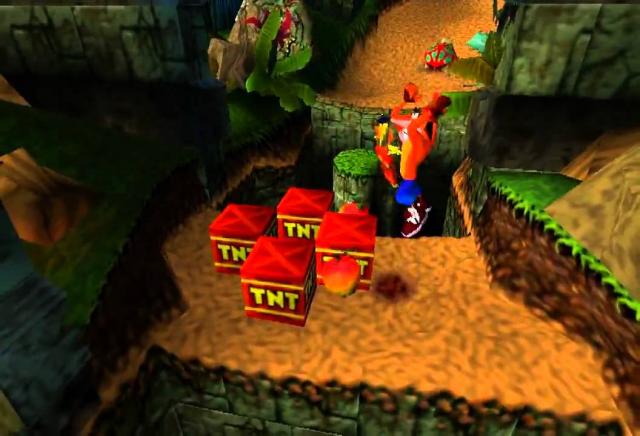
Even moreso than Resident Evil it was Crash Bandicoot that defined the console in 1996. The game's main character became the console's mascot and the game itself went on to spawn one of the most successful franchises of the 90s, with each game in the series on PlayStation selling millions of units.
PC was also continuing its string of great years with a huge number of classic titles, both sequels and new IPs. Final Doom, Quake and Duke Nukem 3 D ensured the continued popularity of the FPS genre on the platform, and games like Command & Conquer: Red Alert, Master of Orion II: Battle at Antares and Civilization II kept strategy fans happy.

PC RPG enthusiasts were also treated to some excellent games in 1996. Bethesda released Elder Scrolls II: Daggerfall, improving upon its predecessor in just about every conceivable way, and Blizzard created Diablo, starting the hugely popular series in grand fashion.
Other notable games released in 1996 include the first Metal Slug and Dead or Alive. Last, but certainly not the least, Pokèmon Red and Green (Blue in the west) were released in Japan, and within one year sold over 10 million copies in that one country alone. When it was later released in the west the number would more than double. This was the start of the Pokèmon phenomenon that would soon take over the world.
In 1997 the console landscape was beginning to change rapidly. Sega had lost a lot of the market share it had gained with the Mega Drive, and the company's inability to produce a Sonic game for the Saturn didn't help the matters. Also, the fact that the console was fairly difficult to program for was another factor in its decline. there were even rumours going around about a successor for the Saturn being in development already, which further made people quite hesitant to purchase the console.

Nintendo, on the other hand, was still seemingly untouchable in the early part of the year, consistently outselling its competition everywhere but Japan. However, Sony's PlayStation was starting to catch up as the year wore on, bolstered by some huge third party exclusives. In addition, Nintendo's decision to use cartridges with the N64 was beginning to hurt them, as many developers were unsatisfied with the storage limitations the cartridge imposed. Others were also angered by the decision to use cartridges because the licensing fees they needed to pay Nintendo were much higher than on CD-based consoles.
This all contributed to the N64's much slower release schedule compared to the PlayStation, as well as to the overall higher price of games on the system. For comparison, a total of 388 games were released on the N64, while the PlayStation enjoyed from a library of around 1,100 games. Even the Saturn received around 600 games during its lifetime.
Speaking of games, the Saturn was now becoming an afterthought for many developers. Most of its third party titles were also available on other platforms - usually the PS1 - and its exclusives weren't enough to keep the console competitive in the market. Sega's first party developers were still the only ones able to effectively use the system's complex architecture to their advantage, which led to a slew of low quality games coming out on the console, many of which were available on other platforms in much better form.
The N64 had a different kind of problem. The games released on the console were often of very high quality and usually sold well. However, the console itself was unable to compete with the sheer number of games coming out on the PlayStation, for instance. While the percentage of great games in its library may have been higher, the PlayStation had so many games releasing every month that the bad games could just be ignored.
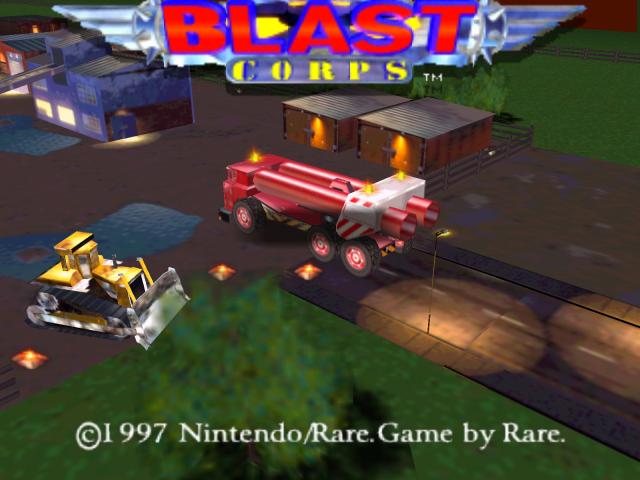
Still, the N64 had its share of great games in 1997. Nintendo themselves released Mario Kart 64 in February, Star Fox 64 in July, and Yoshi's Story in December. The time between these releases was dominated by Rare. They started the year with Blast Corps, which has since become something of a forgotten classic. At the end of the year the developer created the only serious contender to Mario Kart 64 when they released Diddy Kong Racing in November. Which game is better is a matter of debate, but arguments can easily be made for either.

In-between those two games Rare also released another title, and in the process set the standard for console FPS titles for many years to come. The game in question is, of course, GoldenEye 007. It went on to sell over 8 million units on the console, becoming the third best-selling N64 game. It was also the game that proved that the FPS genre could work well on consoles if done right and for a long time stood as one of the premier benchmarks for local multiplayer on consoles.
As the year progressed, Sony's PlayStation began gaining more and more ground on the N64. Highly successful sequels like Tomb Raider II and Crash Bandicoot 2: Cortex Strikes Back combined with entirely new IPs like Parappa the Rapper and Gran Turismo to help the console close the gap between the two consoles very quickly. And then there was Final Fantasy VII.
Square's flagship franchise had in the past always appeared on Nintendo's console, but this was perhaps the first clear instance where the decision to use cartridges backfired on the company. Square was one of the developers dissatisfied with the limitations the cartridge-based console forced upon them, and as a result they decided to jump ship and develop FFVII for the PlayStation instead. This was perhaps the moment that signalled the PlayStation's path towards market dominance. It effectively won Sony the Japanese market as the N64 had very few notable JRPGs to help it there.
PC was home to a number of important games in 1997 as well. In April Bullfrog's Dungeon Keeper was released. The game would go on to influence numerous other games with its dungeon building and management gameplay. July saw the debut of Carmageddon, bringing its special brand of destruction to the forefront. September was another big month for PC gamers when Ultima Online, Fallout, and Total Annihilation all - incredibly - released on the same day. November would also witness several big releases, with the likes of Grand Theft Auto, Star Wars Jedi Knight: Dark Forces II, Age of Empires, and The Curse of Monkey Island launching within weeks of each other. To round out the year gamers got their hands on Quake II in December.

Unfortunately, the year also brought some sad news to the gaming world when Gunbei Yokoi, the creator of the original Game Boy and the Game & Watch series of handhelds, died in a car accident at the age of 56. He was also the inventor of the D-pad and worked on numerous highly regarded video games during his time at Nintendo. Without Yokoi the video game industry would be a very different, and likely a much smaller place. His design philosophy is still influencing Nintendo today through the people who worked with him, including famed developer Shigeru Miyamoto.
This is where we'll stop this time. The fifth console generation is just hitting its stride, but the status quo wasn't to last long as one of these companies took yet another leap forward very soon. That, and more, next time. As always, thanks for reading.
More Articles
This article series is amazing, it brings up lots of good memories for me.Keep the good work! :)
Thanks! It's really nice to hear people enjoy reading about this stuff as much as I enjoy researching it.
"It was the first 3D Mario platformer and ended up becoming the best-selling game on the system. It is one of the most successful jumps from 2D to 3D that any franchise has ever made"
Hence why I list the game as the game of that generation.
A good read, but I'm surprised it didn't discuss the Saturn renaissance in Japan. Backed by some solid games, and a brilliant ad campaign starring Segata Shanshiro (which is hilarious, look it up on YouTube), the Saturn pulled back into second place in Japan in the second half of this generation. Also missing is any reference in the last article or this one to the Sega 32X.
Good article, kind of nostalgic too.
I wish it was still 1994-1997.
Squaresoft jumping to the Playstation was set in motion from the failed deal to create the Nintendo/Sony Play station, Square had been working on Secret of Mana for that platform and creating music and a far larger world/story for the game with the huge amount of storage which would be available to them with CDs, when the deal fell apart they had to go back over Secret of Mana and cut out huge portions of music and the games story, which is a shame because of what an amazing game Secret of Mana is.... the thought of what it could have been if the Sony/Nintendo platform had launched really makes me wonder.
That said... another great era covered here and an absolute pleasure to read through, really stirred up some good memories and some really bad ones, Sega's handling of the Saturn was appalling from launch to discontinuation was just a disaster.
Looking forward to the launch of the PS2 and Dreamcast episode of these :)
Wasn't resident evil on Saturn though? But great read!
Timed exclusive, Mar96 launched on the PSone then Dec96 it came out on the PC , it wasn't until July of 97 that the saturn version launched. Same with the ports of Resi evil 2, came out a year later on the PC and a year and a half later on the N64 then finally the Dreamcast almost 2 years after the PSone game.
I believe from the N64 release nothing ever felt the same again. Playing Mario 64 to Zelda Ocarina of Time to Banjo Kazoorie to Donkey Kong 64. The standards took off and even to today, I still haven't played better 3D Platformers or Adventure games then what the N64 offered.
3D maybe got the standard but it didnt stop devolopers to create some of the best 2D sprite based games ever made during this time like Alundra and Castlevania SotN
And now VR is the new big step.
I agree with you on all points. I'm guessing the biggest reason behind the disappearance of 2D games is that their sales plummeted once 3D games starting coming out. There are some exceptions of course but I think publishers mainly focused on 3D games because they were very trendy at the time and ultimately more profitable. You could say even say the same thing today, which explains why most 2D games are downloadable indie titles and Kickstarter projects.








